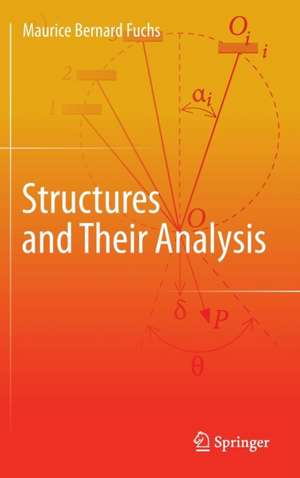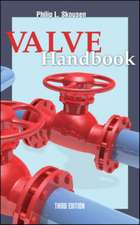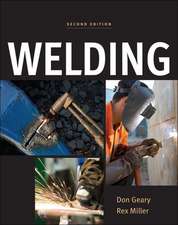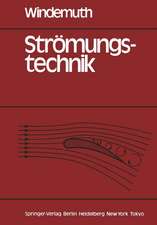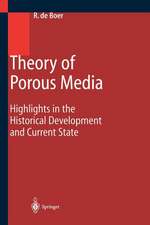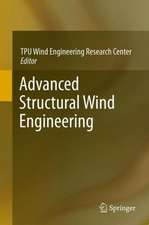Structures and Their Analysis
Autor Maurice Bernard Fuchsen Limba Engleză Hardback – 17 mai 2016
| Toate formatele și edițiile | Preț | Express |
|---|---|---|
| Paperback (1) | 590.63 lei 6-8 săpt. | |
| Springer International Publishing – 27 mai 2018 | 590.63 lei 6-8 săpt. | |
| Hardback (1) | 596.87 lei 6-8 săpt. | |
| Springer International Publishing – 17 mai 2016 | 596.87 lei 6-8 săpt. |
Preț: 596.87 lei
Preț vechi: 702.21 lei
-15% Nou
Puncte Express: 895
Preț estimativ în valută:
114.23€ • 118.81$ • 94.30£
114.23€ • 118.81$ • 94.30£
Carte tipărită la comandă
Livrare economică 14-28 aprilie
Preluare comenzi: 021 569.72.76
Specificații
ISBN-13: 9783319310794
ISBN-10: 3319310798
Pagini: 404
Ilustrații: XXV, 404 p. 310 illus., 10 illus. in color.
Dimensiuni: 155 x 235 x 29 mm
Greutate: 0.78 kg
Ediția:1st ed. 2016
Editura: Springer International Publishing
Colecția Springer
Locul publicării:Cham, Switzerland
ISBN-10: 3319310798
Pagini: 404
Ilustrații: XXV, 404 p. 310 illus., 10 illus. in color.
Dimensiuni: 155 x 235 x 29 mm
Greutate: 0.78 kg
Ediția:1st ed. 2016
Editura: Springer International Publishing
Colecția Springer
Locul publicării:Cham, Switzerland
Cuprins
Preliminaries.- Structures.- Flexibility.- Stiffness.- Optimal Concerns.
Notă biografică
Born in France, the author grew up in Antwerp, Belgium, and graduated from the Ecole Polytechnique of the Free University of Brussels (ULB) with a degree in civil and aeronautical engineering, specializing in structures. He later completed his ScD in Technology at the Faculty of Aeronautical Engineering at the Israel Institute of Technology (Technion), and worked for five years in structural engineering and integrity at Israel Aircraft Industries. He joined the Department of Solid Mechanics, Materials and Structures of Tel Aviv University in 1977, where he has been a faculty member ever since. He was the first head of the then newly established School of Mechanical Engineering and is currently Professor Emeritus at that school.
The author has taught basic and advanced undergraduate courses in structural analysis and aircraft analysis and design, as well as graduate courses in finite-element analysis and structural optimization. He has also taught structures courses to architectural students at the Faculty of Architecture at the Technion and at the School of Architecture of Tel Aviv University. He has been a visiting assistant professor at the School of Engineering at UCLA, a visiting scholar at the Engineering Department of Cambridge University and a visiting professor at the Joseph Fourier Université de Grenoble.
He was a founding member of the ISSMO (International Society of Structural and Multidisciplinary Optimization) and has been a regular contributor to its conferences and meetings. His research field is the design of optimal structures, in which he has published over 50 papers.
Textul de pe ultima copertă
Addressing structures, this book presents a classic discipline in a modern setting by combining illustrated examples with insights into the solutions. It is the fruit of the author’s many years of teaching the subject and of just as many years of research into the design of optimal structures. Although intended for an advanced level of instruction it has an undergraduate course at its core. Further, the book was written with the advantage of having massive computer power in the background, an aspect which changes the entire approach to many engineering disciplines and in particular to structures. This paradigm shift has dislodged the force (flexibility) method from its former prominence and paved the way for the displacement (stiffness) method, despite the multitude of linear equations it spawns. In this book, however, both methods are taught: the force method offers a perfect vehicle for understanding structural behavior, bearing in mind that it is the displacement method which does the heavy number crunching. As a rule the book keeps things as simple as possible, conveying the basic ideas and refraining from lengthy calculations wherever possible. Further, it endeavors to unify the approach, showing that whatever applies to simple springs is equally valid for intricate frames. In addition to various design considerations, it also addresses several topics relating to optimal structures that will be of interest to students and teachers of structures.
Caracteristici
Presents a classical subject in a modern setting Offers two approaches: the force (flexibility) method and the displacement (stiffness) method Conveys the basic ideas, while avoiding lengthy calculations Includes illustrated examples complemented by insights into the solutions Includes supplementary material: sn.pub/extras
